Learn how to transfer your saved website login details—including email addresses, usernames, and passwords—from Google Chrome to Safari on your iPhone, iPad, and Mac.
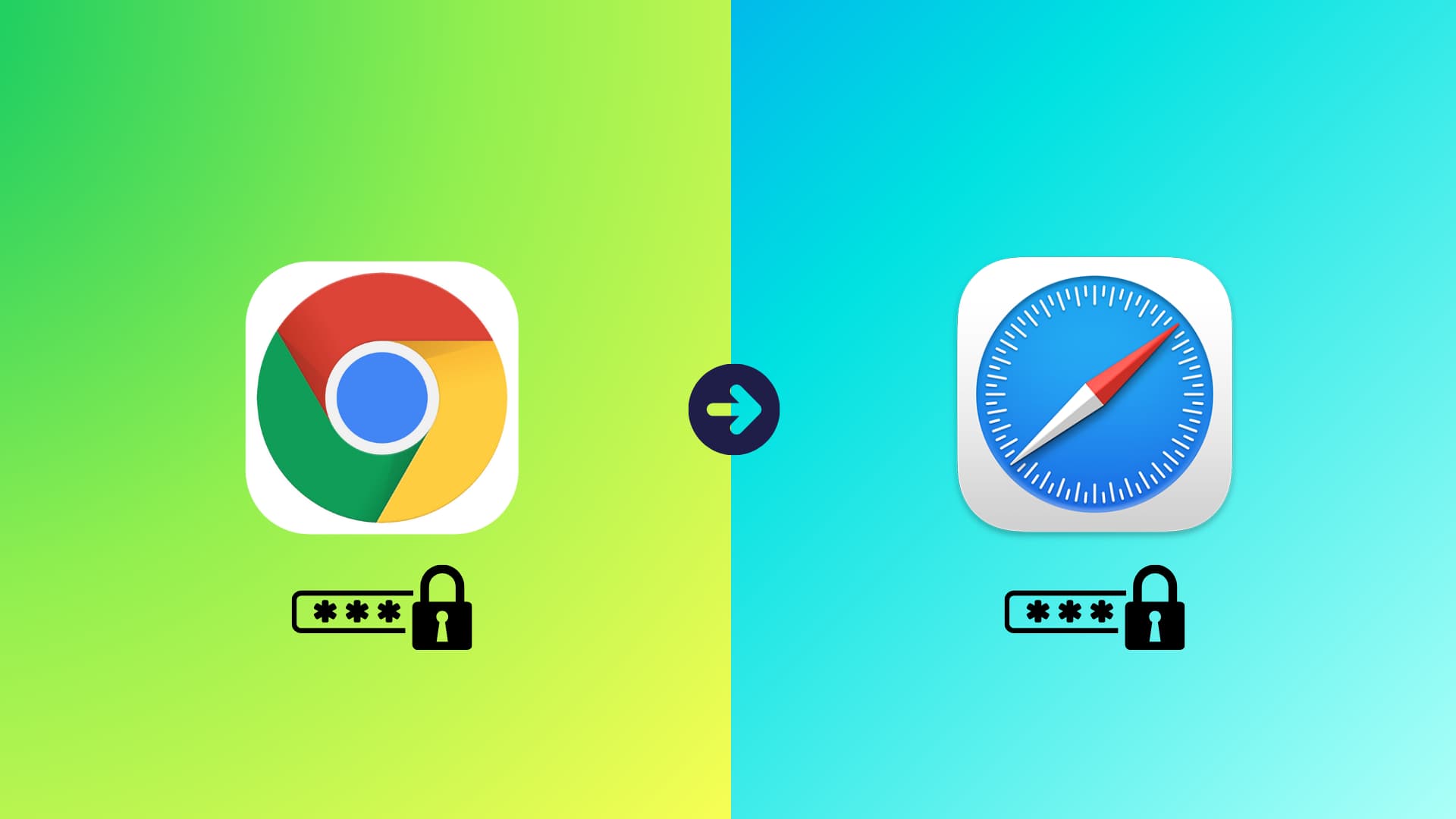
After following one of the methods below, your newly imported passwords will upload to iCloud and sync across all your devices, including iPhone, iPad, Mac, and Windows PC. To avoid duplicates, import your Google Chrome passwords to Safari on just one of your Apple devices.
Also, note that your saved passwords will be copied to Safari/Apple Passwords, not moved. You’ll still find them in Google Password Manager in Chrome or on the web.
If you also use a third-party password manager like 1Password, LastPass, Bitwarden, Dashlane, etc., we have covered that in a separate tutorial How to import passwords from other apps into Apple Passwords.
Import Chrome passwords to Safari on iPhone and iPad
The process is simple: it involves exporting your Chrome passwords as a CSV file and then importing that file into Safari, which in turn will add all of those saved passwords to the Apple Passwords app. Make sure your iPhone or iPad is on iOS 18 or iPadOS 18 for this method to work.
1) Download Google Chrome on your iPhone or iPad and sign in with your Google account, so all your passwords sync there.
2) Open Chrome on your iOS device and tap the three dots menu icon in the bottom right, followed by Password Manager.

3) Tap Settings and select Export passwords.

4) Tap Save to Files in the iOS Share Sheet and save it to a location inside the Apple Files app.

5) Next, open iPhone or iPad Settings and tap Apps from the bottom. Thereafter, select Safari from the list of applications.
6) Tap Import under the History and Website Data section.

7) Tap Choose File and select the Chrome Passwords CSV file you saved in step 4 earlier.

8) Now, Import to Safari. Once the import is successful, tap Done. Note that Safari may skip copying duplicate entries if they exist in the CSV file.

Important: Your phone or tablet will now alert you to delete the CSV passwords file, as it has all your login details in plain text. If you aren’t incredibly careful, this file may fall into the wrong hands, get uploaded to cloud services, or be otherwise misused. So, tap Delete “Chrome Passwords.csv” or delete it manually via the Files app.

9) Finally, go to the Apple Passwords app to find all the login details imported from Google Chrome. These will also sync to your other devices where you have set up iCloud Passwords.

Other options
If your device is on an older version of iOS or iPadOS, import your Chrome passwords to Safari using your Mac (explained below), and they will automatically sync to your iPhone and iPad via iCloud Keychain. It’s safe, easy, fast, and secure.
Alternatively, you can set Chrome to autofill passwords in Safari and other iOS apps. This is the go-to method if you use Chrome and Safari browsers simultaneously and don’t want to bother importing new passwords every few weeks.
Caution: Don’t try third-party apps! You may come across third-party services that claim to help copy your Chrome passwords to Safari. I strongly suggest you never use these apps and services because of the severe security risks attached to them. You don’t want an obscure third party coming between you and your sensitive passwords.
Import Chrome passwords to Safari on Mac
If you’ve set Google Chrome or Firefox as your Mac’s default browser, you’ll see options to import bookmarks, browsing history, and passwords when you open Safari for the first time. Just use the button there, and you should be good to go. If you missed it, follow these steps to manually bring your saved Google Chrome passwords to Apple’s Safari browser.
1) Quit the Google Chrome browser if it’s already open on your Mac.
2) Open Safari on your computer, and from the top menu bar, click File > Import From Browser and choose Google Chrome.
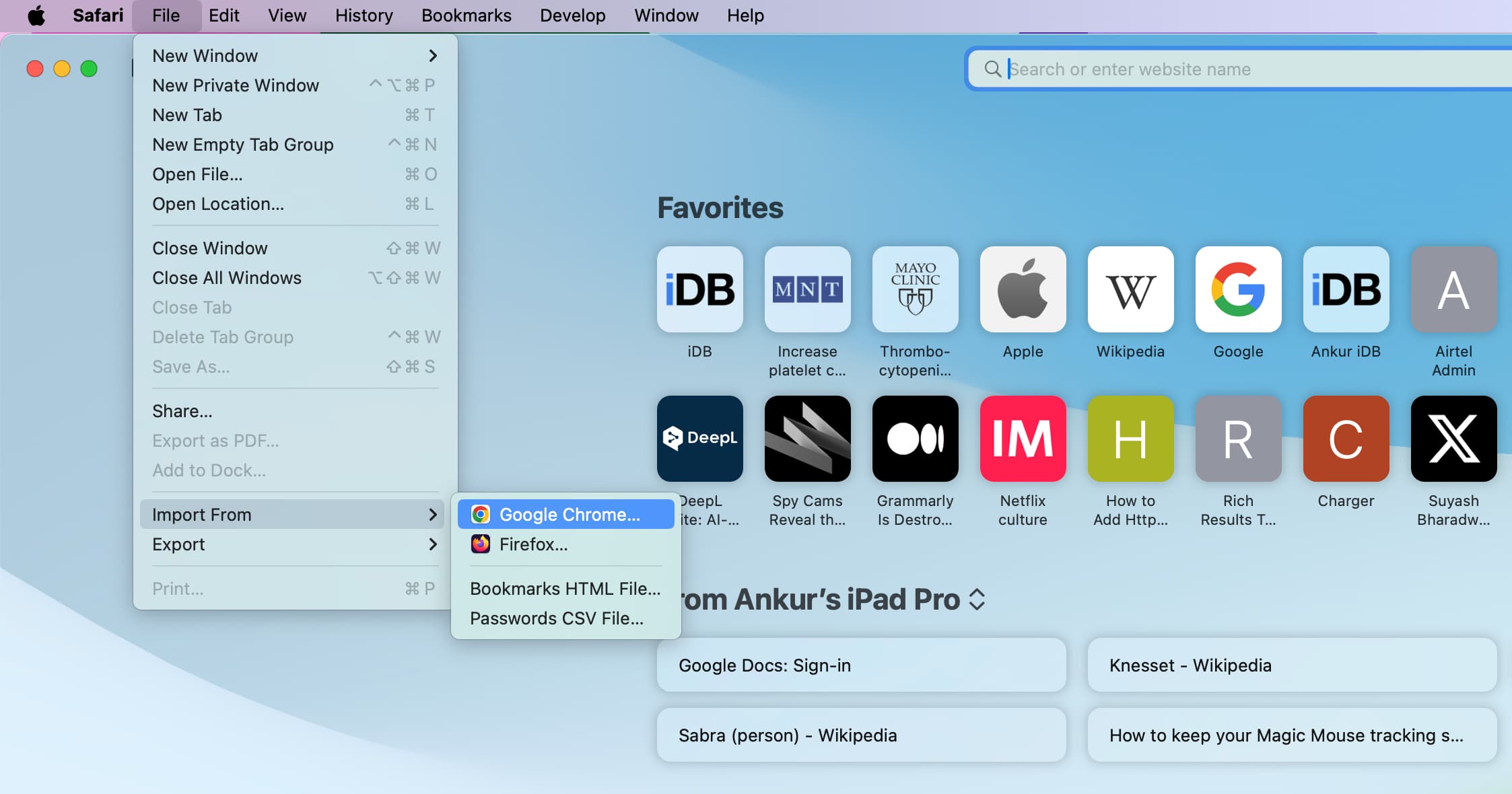
3) Make sure the Passwords box stays selected and hit the Import button.
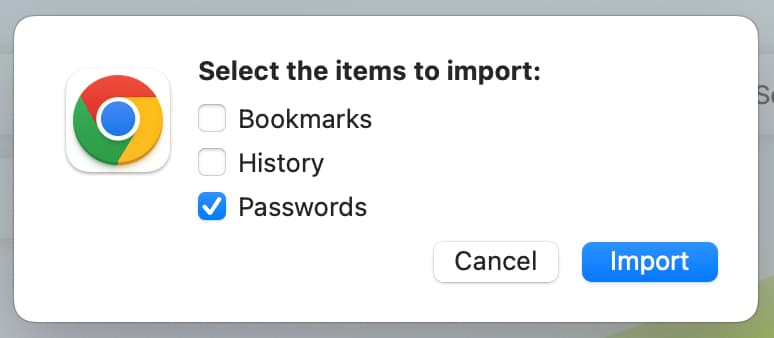
4) Enter your Mac’s password and Allow Safari to use your confidential information stored in “Chrome Safe Storage.” You may have to enter your Mac’s password a second time and hit Allow again. After that, Safari will begin importing your Chrome passwords.

5) Once importing is done, click OK.

Once you’ve imported the account password from another browser to Safari, go to the Apple Passwords app, and you’ll find the imported passwords here. If your computer is on an older version of macOS, head to Safari Settings > Passwords or System Settings > Passwords instead.
Unfortunately, there isn’t a recently added section in either the Passwords app or System Settings to help you quickly find the passwords that were copied from another browser. You can, however, manually check for yourself to see that the account emails, usernames, and passwords were actually imported over.
Import Google Passwords to Safari on Mac using a CSV file
Another method to get your Chrome passwords to Safari involves exporting your Chrome passwords as a CSV file and then importing that file into Safari.
1) Open Chrome on your Mac and export its passwords as a CSV file by visiting this direct Chrome link (chrome://password-manager/settings) or navigating to Chrome Settings > Autofill and passwords > Google Password Manager > Settings.
Click the Download file button next to the Export passwords option and Save the CSV file.
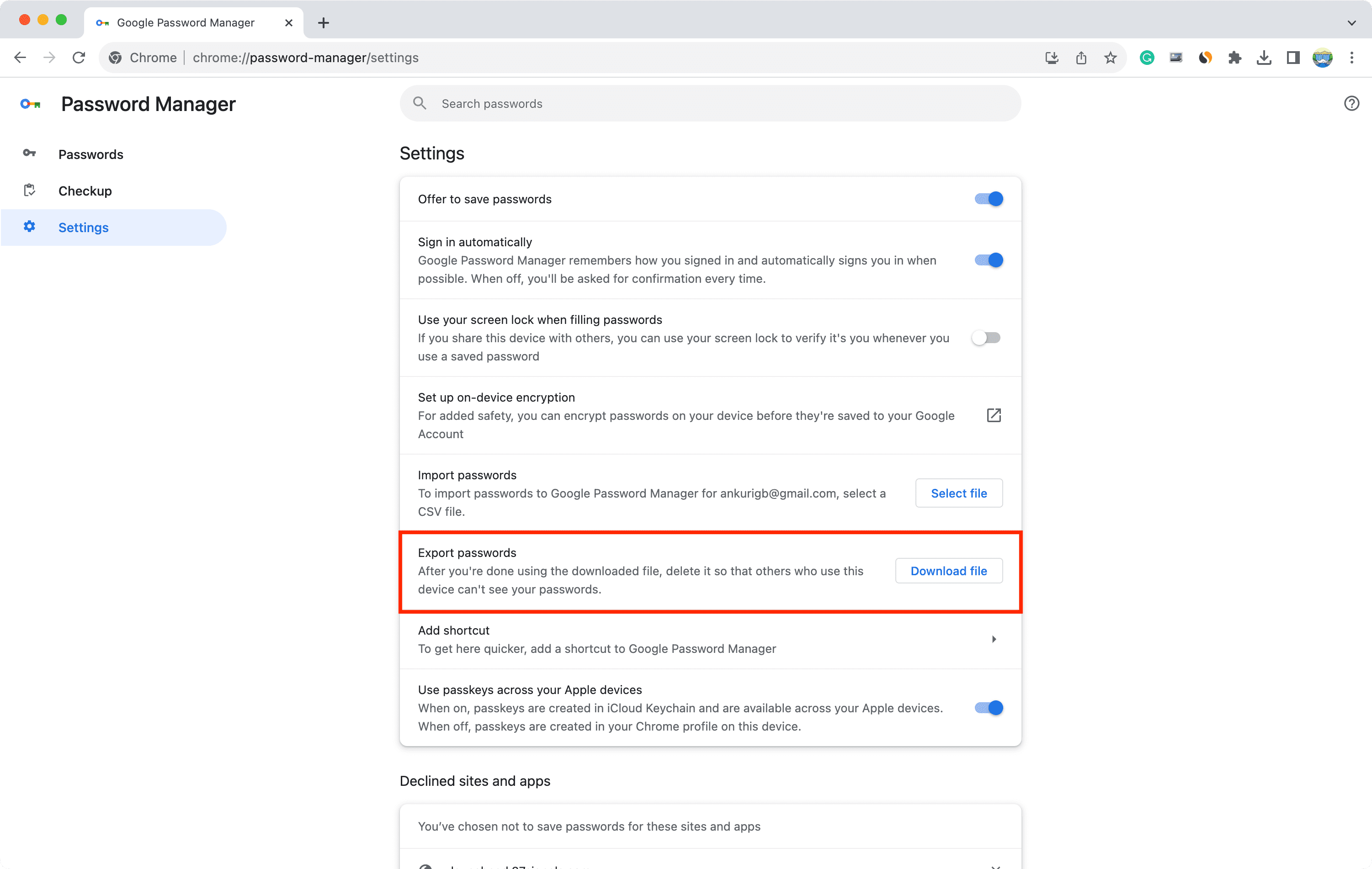
2) Open Safari, and in the top menu bar, click File > Import Browsing Data from File or Folder. On older versions of macOS, click File > Import From > Passwords CSV File.
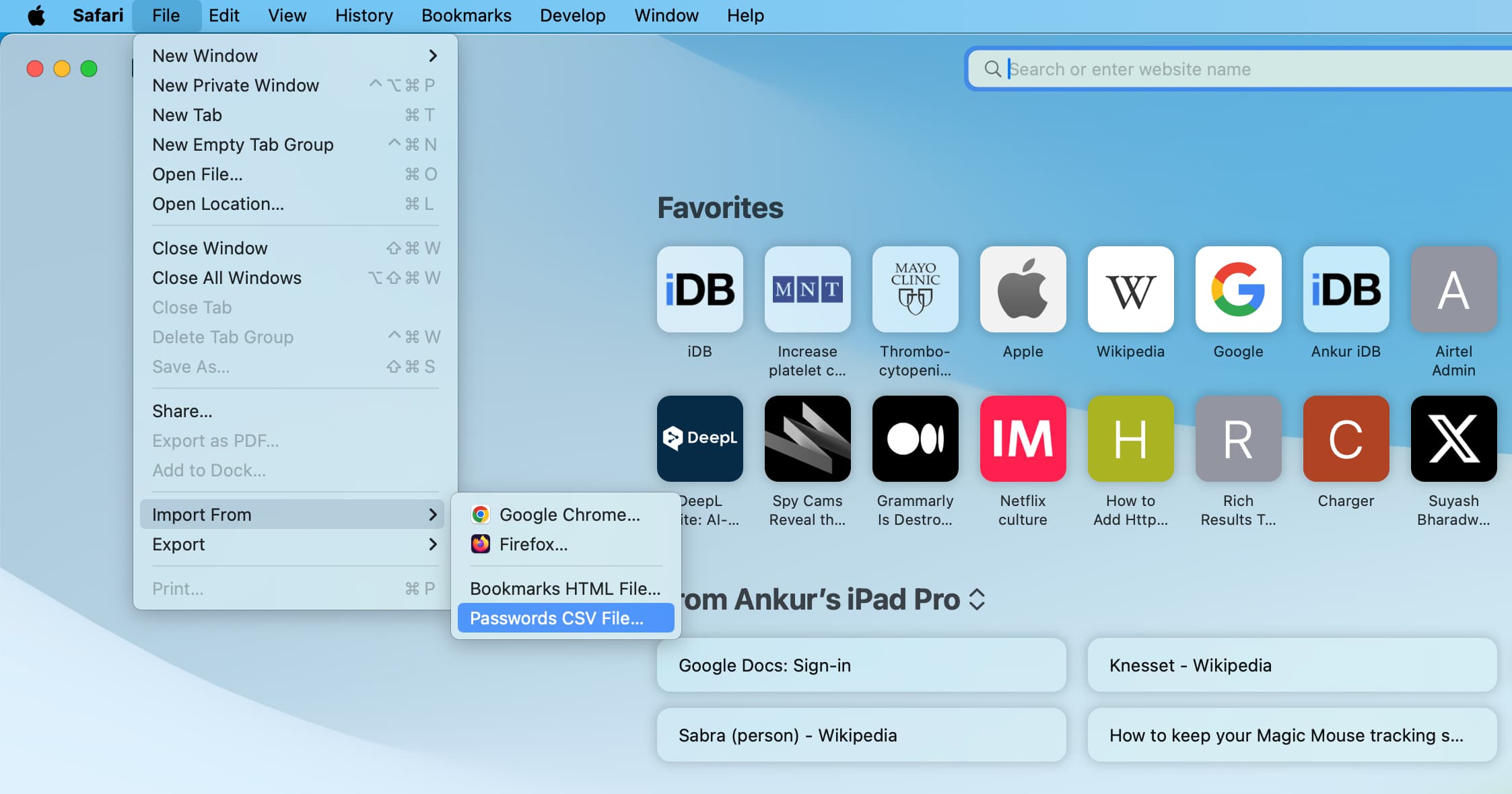
3) Click Choose File or Folder.
4) Select the Chrome Passwords CSV file you downloaded earlier and hit Import. After that, use Touch ID or your Mac’s password to authenticate.
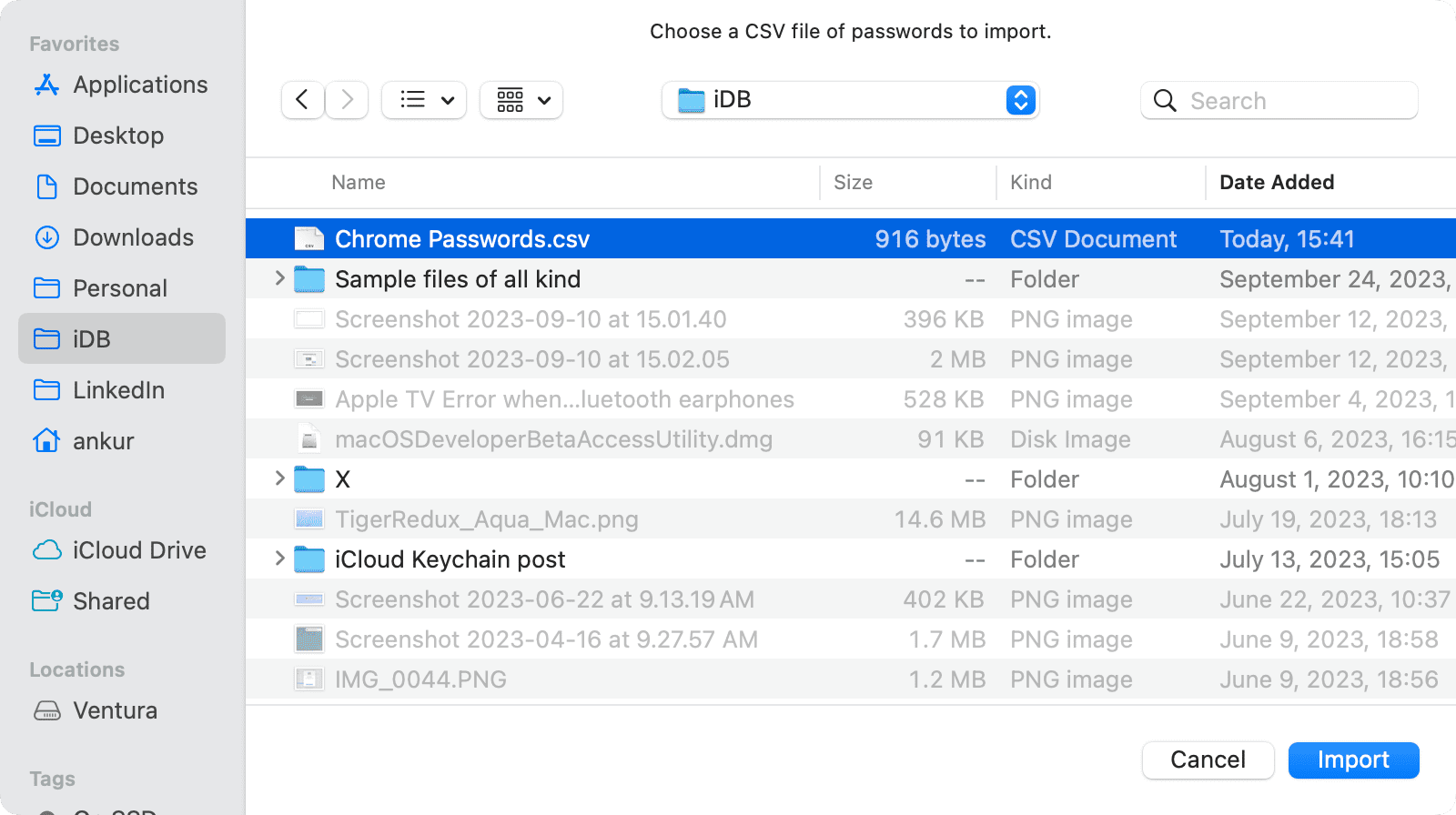
5) Once the passwords are imported, delete the CSV file from Finder and the Trash.
On a related note: